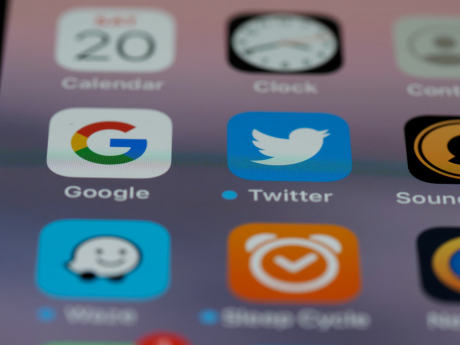Marketing research shows that customers tend to choose global brands over local brands. Customer preference results from the three following reasons:
-
Perceived quality
-
Global culture
-
Country of origin
Customer Preference
Many customers have a strong preference for global over local brands for various reasons, three of which stand out—perceived quality, global culture, and country of origin.

Table of Contents
Perceived Quality
Many customers believe that global brands offer products of high quality just because of their global availability and sales by presuming global success testifies to high quality and justifies the high price. Customers perceive global brands as more dynamic and more willing to upgrade themselves what gives them the upper hand over local brands which are perceived as more stagnant, less exciting, and offering fewer options. By associating global brands with quality, customers don’t question high prices and validate them with high quality so they are more willing to pay more. Customers usually want to be identified with strong and global brands because they tend to transfer brand qualities to themselves and view global brands as a breath of the big world.
To become a globally recognized brand, you need to believe you can do it. Global brands claim their first place in the world without asking anyone for permission. They just say they are the world’s best-selling brand. Your goal is to make customers believe you are a global brand by highlighting numerous locations around the world where you operate. It will make you appear big and successful what is extremely important while creating a global brand. Not many companies dare to claim the position of a global brand, but it sometimes can be easier than it seems. If you believe you a global brand and act as a global brand, consumers will believe you, but first, you must believe you are capable of delivering services or products on a global scale. Once you believe it and act on it, the consumers’ preconceived favorable beliefs on global brands will help you enormously in the long run.
Global brands usually present a unified image to all customers regardless of their origin so before introducing your brand to the market you should prepare a consistent brand image that will be well-matched to your all target markets.
Back to topGlobal Culture
Global brands such as Coca-Cola, Apple, Chanel, Starbucks, Mercedes are icons that create a global culture. Consumers of global brands share a global identity, identify themselves with their brand values, and perceive brands as symbols of cultural ideals. Buying branded products make people believe they are a part of a group of like-minded individuals who share common beliefs and participate in a global world. Global brands give their consumers a passport to global citizenship and a feeling of belonging to the global world which embodies progress, wealth, prosperity, modernity, and a promise of a better life.
Global brands attract consumers because of a common set of values, traits, and practices. The consumer culture created by global brands is attractive and enticing to potential customers who are looking for their identity. Customers of global brands are very loyal because they are afraid of losing their identity and a sense of belonging to something bigger. By speaking a universal language, global brands create a global community of their ambassadors who are not customers anymore, but fans or even fanatics. They choose their favorite brand, even if some other brands offer better or cheaper products. There is a vast community of Apple customers who are extremely loyal to their brand and are ready to list thousands of reasons they prefer Apple over other brands.
In short, local brands demonstrate what we are, in contrast to global brands which show what we aspire to be. The secret of the enormous popularity of global brands is the ability to create the world that we all dream of being part of. This world is colorful and alluring, often because of the fact of its exclusivity. Global brands create this aura of exclusivity on purpose using various methods such as premium price, limited availability, or exceptional customer service. All these marketing strategies are very effective because everybody wishes to be a part of an exclusive community where only some individuals have access to. Global brands make us feel significant and exceptional by serving us with special attention and providing us with goods that only a limited number of consumers can have.
Coca-Cola is an iconic global brand. Its powerful position on the global market results from a globally unified growth strategy based on innovation, consumer-centricity, revenue growth management, execution, quality leadership.
Starbucks is another global brand that has attracted a lot of customers and is constantly increasing its market share across the globe. Starbucks’ primary goal is to provide its customers with a delightful and entertaining experience so they focus their customers’ attention on unforgettable experiences and memories that happen inside their coffeehouses. As expected, Starbucks customers appreciate the quality of the experience that they get and pay less attention to the prices of coffees which happen to be premium. Starbucks has become known as a popular place for business meetings. Therefore, many business people who want to be perceived as sophisticated and worldly take their clients to Starbucks.
Back to topCountry of Origin
Another important aspect of brand creation is connected to a particular country of origin. Some countries such as France, Germany, or the United Kingdom have a very distinct image which if used properly can be very beneficial to global brands. Customers around the world have specific associations with certain countries that can help global brands create the desired perception of their companies. Savvy marketers can transfer these globally recognized qualities of these countries to their brands.
Finnish Fiskars Group famous for its high-end hand tools uses British origin to develop Wedgwood as a premium brand in tableware and home decoration. They masterfully highlight the Wedgwood brand’s connection with the British Royal Families. On their website, you can find the information Wedgwood collections were to adorn the tables of British monarchs since the time of Queen Charlotte. This is a perfect example of a branding strategy based on the country of origin which benefits from all the powerful points of the particular country. Customers’ associations with Britain support the key message of the Wedgwood brand and gradually build customer preference for this global luxury brand among the aristocracy and upscale clientele.
Some countries like Germany, Switzerland, Japan, the United Kingdom, or the United States have a generally positive country-of-origin image across a wide range of B2C and B2B industries.
For instance, German industries benefit from the global association of Germany with reliability, trustworthiness, and dependability what makes German companies like Bosch or Audi emphasize their country of origin. However, in the case of some other countries like France or Italy, the beneficial contribution of the country’s image to a brand reference is limited to the specific product category. For example, a French producer of cosmetics L’Oreal Paris benefits a lot from its country image which is associated with beauty, fashion, sophistication, and style, in contrast to the car industry where France does not have a leading position and a French country-of-origin does not guarantee dominant standing. The car producer Peugeot constantly needs to prove the quality of their cars and go head-to-head with German car producers whose entry status is very strong.
To effectively use a country-of-origin in our branding strategy, it is necessary to scrutinize the image of the chosen country on the market where we will sell our products.
Some facts:
-
Country of origin plays a more significant role in buyers’ decisions referring to complex products with a high-performance risk such as complex machinery, cars, or heavy equipment, in contrast to products with a low-risk level such as office supplies, kitchenware, or furniture.
-
The country of development (e.g. Germany, the USA, Sweden) where the product is devised, designed, and engineered has a bigger effect on customers’ or purchase managers’ decisions than the country of assembly (e.g. China, Mexico). It stems from the fact manufacturing expertise is more easily acquired than R&D know-how.
-
The country of origin influences the assessment of the quality of products. Japan, Germany, Switzerland, and the United States have the most positive country-of-origin image among consumers around the world. Newly industrializing countries such as Mexico, India, or Brazil have the least positive image. China’s image is in between and improving.
-
On the B2B market, purchase managers pay attention to the country of sourcing for industrial parts that create the final product. By sourcing components from an acclaimed country (e.g., Japan, the USA, Germany), the B2B companies can alleviate a negative country-of-development or country-of-assembly image (e.g., China, India).
The reason why global brands are so successful is the trust among their customers which they have gained over a lot of years. Customers perceive global brands as reliable and trustworthy what results in their stronger and stronger position. It is challenging for local brands to compete with global brands. However, if local brands are creative and persistent enough, they can become global brands in the future.
Like our content? Follow BUSINESS POWERHOUSE on LinkedIn, Twitter, Facebook, Instagram, and Pinterest to stay up-to-date on our latest articles.
Back to topAuthor: Justine Ilone Siporski is Editor-in-Chief & CEO of BUSINESS POWERHOUSE, the founder and CEO of LANGUAGE EMPIRE, coach, trainer, investor and columnist dedicated to the advancement of entrepreneurs, investors and the C-suite (CMOs, CEOs, CFOs, CIOs). Her key mission is to support leaders, business professionals, and investors in achieving their highest potential, making the right business and investing decisions, and expanding their horizons.







Comments